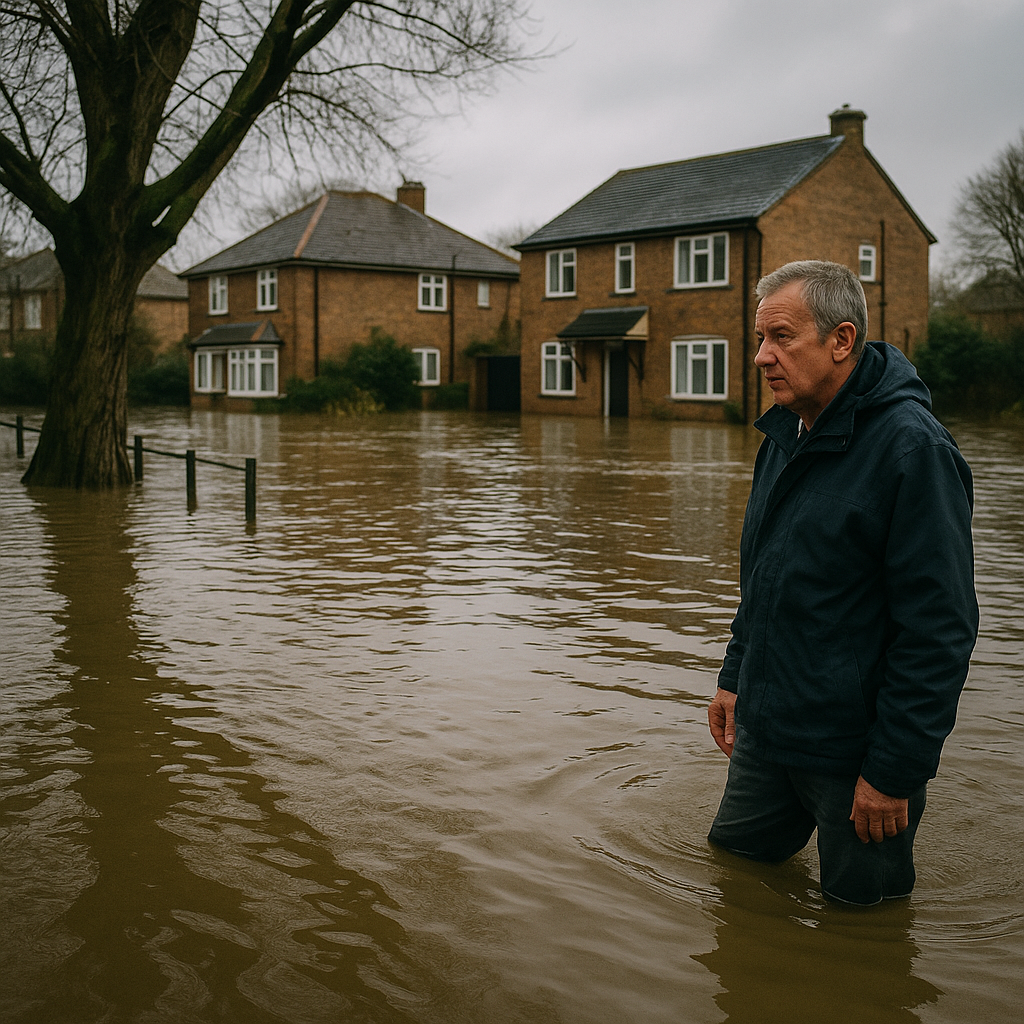From chaos to clarity: New model enhances flood mitigation amid climate crisis
Flood disasters remain one of the most devastating forms of natural catastrophe, causing massive social, economic, and environmental damage. Traditional flood risk models often rely heavily on deterministic or probabilistic frameworks that require complete datasets and precise environmental modeling, conditions that are rarely met in real-world scenarios.

Floods remain one of the most devastating forms of natural catastrophe, resulting in massive social, economic, and environmental damage. Traditional flood risk models often rely heavily on deterministic or probabilistic frameworks that require complete datasets and precise environmental modeling, conditions that are rarely met in real-world scenarios. Now, a newly published study has introduced a breakthrough framework designed to tackle the challenge of flood risk more comprehensively. The paper, titled “Bridging the Gap: A Novel Approach to Flood Risk Assessment for Resilience,” was published in the journal Water.
The research proposes a multi-layered, modular methodology that blends Event Tree Analysis (ETA), Dempster–Shafer evidence theory, and optimization models to provide a holistic assessment of flood risks, their consequences, and the effectiveness of various mitigation measures. Unlike conventional approaches, this model addresses both uncertainty and real-world complexity, offering a tool adaptable to various geographic settings and tailored to improve community resilience.
What are the limitations of traditional flood risk models?
The new study criticizes the linearity and rigidity of these conventional models, pointing out that they often fail to account for the cascading consequences of different flood events and do not sufficiently incorporate uncertainty. This is particularly problematic in areas where historical data are sparse or expert judgment must supplement empirical observation.
To address these gaps, the researchers designed an adaptable model that not only forecasts the likelihood of different flood scenarios but also considers the uncertainty in risk assessment using Dempster–Shafer theory. This evidence-based method allows decision-makers to work with incomplete or ambiguous data and still reach rational conclusions about risk levels and required interventions.
By introducing Event Tree Analysis into the flood modeling domain, the study also provides a dynamic visualization of potential outcomes. ETA enables the representation of branching sequences of events that may follow an initial flood occurrence, allowing for a nuanced analysis of probability chains and impact severity. This is a significant step toward capturing the complex, multi-stage nature of real-world disasters.
How does the proposed framework improve resilience?
The study evaluates different flood prevention measures in terms of their cost-effectiveness and contribution to long-term resilience. The model simulates a range of preventive options, including flood defenses, early warning systems, and sustainable land-use practices, and uses optimization techniques to assess how these options can be most efficiently deployed.
Rather than recommending a one-size-fits-all solution, the model is modular and context-sensitive, meaning it can be calibrated to suit the needs of specific regions or communities based on localized data and expert input. This flexibility is particularly useful for developing countries and regions facing unique climatic, topographic, or socio-economic conditions.
The use of Dempster–Shafer theory in this context is critical, as it allows decision-makers to integrate both empirical evidence and expert belief. This is especially important when evaluating long-term strategies, where data on future climate behavior or land development are necessarily incomplete. The approach offers a more inclusive and forward-looking mechanism for planning flood defenses.
The authors emphasize that risk assessment is not only a scientific task but also a socio-political one. By involving experts, local authorities, and planners, the model fosters participatory risk governance that empowers communities to co-develop strategies for prevention and recovery.
Why is this model crucial in the era of climate uncertainty?
The frequency of catastrophic floods is expected to rise further in the coming decades, amplified by global warming and land-use change. Urbanization, deforestation, and aging infrastructure exacerbate the consequences of even moderate flood events. The urgency for better forecasting and preventive infrastructure is matched only by the need for models that reflect the chaotic nature of environmental systems.
This study directly responds to the limitations of static models by offering a dynamic, multi-scenario planning tool. The combination of ETA and Dempster–Shafer theory acknowledges the inherent uncertainty in flood risk assessment while still enabling structured, quantitative decision-making. The model's optimization component ensures that budget constraints, which are common in public infrastructure projects, are factored into the equation.
Additionally, the paper addresses the strategic value of layered mitigation techniques, the idea that effective flood prevention requires redundancy. Rather than placing all bets on a single barrier or system, the authors advocate for a diversified portfolio of defenses that complement one another and reduce systemic vulnerability.
The adaptability of the model also opens the door to cross-border and transregional application. Since the framework relies on modular components and expert assessments, it can be exported to other countries or adapted for different types of natural disasters, such as landslides or storm surges. This makes it not just a local innovation but a potential global asset in the fight against climate-driven catastrophes.
- FIRST PUBLISHED IN:
- Devdiscourse










